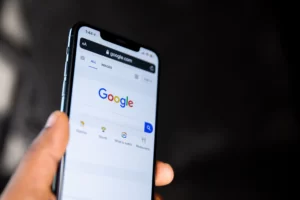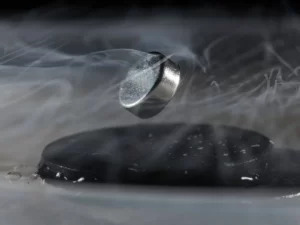What is LK-99 and why is it controversial?
LK-99 is a chemical that has been claimed to be a room-temperature superconductor, or a material capable of conducting electricity without resistance or energy loss under normal conditions. If correct, this would be a game-changing finding with far-reaching ramifications for science and industry. The assertion, however, has been met with substantial skepticism and condemnation from the scientific community, and no independent verification or replication has been obtained thus far.
LK-99 is called after Lee and Kim, two South Korean researchers from a start-up business who initially revealed their discoveries in July 2023. They posted two preprints to arXiv, an online repository of unreviewed scientific works. 12 They claimed in their publications that LK-99 is a gray-black polycrystalline substance made up of copper, lead, phosphorus, and oxygen. They claimed to have created the material by combining the elements in a specific ratio and heating them in an oven. They also claimed to have observed two critical superconducting indicators in LK-99: zero electrical resistance and the Meissner phenomenon, which is the expulsion of magnetic fields from the material. These occurrences, they claim, happened at temperatures above 127 °C (400 K) and at atmospheric pressure, which is unprecedented for any known superconductor.
The LK-99 claim sparked a lot of interest and excitement on social media, particularly among amateur enthusiasts and hobbyists who attempted to recreate the experiment with homemade equipment. Professional scientists, however, raised many red flags and suspicions, pointing out several problems and discrepancies in the publications. Some of the concerns are as follows:
- The lack of details and clarity on how the material was synthesized, characterized, and tested.
- The lack of proper controls and comparisons with other materials or methods.
- The lack of reproducibility and consistency among different samples or measurements.
- The lack of theoretical explanation or mechanism for how such high-temperature superconductivity could be possible.
- The lack of peer review or independent validation by other research groups or institutions.
What are the attempts to replicate LK-99 and what are the results?
Several research teams from around the world have attempted to recreate the experiment and validate the claim of room-temperature superconductivity since the announcement of LK-99. However, none of them have so far succeeded, and some have reported contradictory or unfavorable outcomes.
A team from the National Physical Laboratory of India in New Delhi performed one of the first efforts. 3 They synthesized LK-99 using the same procedure as Lee and Kim, but their samples showed no evidence of superconductivity. They investigated LK-99’s electrical resistance and magnetic susceptibility at different temperatures and found no evidence of zero resistance or the Meissner phenomenon. They also used X-ray diffraction to determine that LK-99 had a different crystal structure than Lee and Kim reported.
Another effort was attempted by a team from Beijing’s Beihang University. 4 They also synthesized LK-99 in a similar manner to Lee and Kim, but they found no evidence of superconductivity in their samples. They investigated LK-99’s electrical resistance and magnetic susceptibility at different temperatures and found no evidence of zero resistance or the Meissner phenomenon. They also used scanning electron microscopy to determine that LK-99 had a different morphology than Lee and Kim described.
A crew from Nanjing’s Southeast University made a third attempt. 5 They made LK-99 in a somewhat different way than Lee and Kim, but they claimed to see evidence of superconductivity in their samples. The electrical resistance of LK-99 was measured at various temperatures and found to be near zero at roughly -163 °C (110 K), which is much below ambient temperature but still high for superconductors. They did not, however, measure the Meissner effect or any other trace of superconductivity in their samples. They also used X-ray diffraction to determine that LK-99 had a different crystal structure than Lee and Kim reported.
What are the implications and challenges of LK-99?
The LK-99 claim has piqued the interest and curiosity of scientists and laypeople alike, as it has the potential to open up new avenues for research and technology. Superconductors have a wide range of uses, including electronics, energy, transportation, medical, and quantum computing. Current superconductors, on the other hand, require extremely low temperatures or high pressures to work, limiting their practical application. A superconductor at room temperature could transcend these restrictions, allowing for more efficient and powerful devices and systems.
However, the LK-99 claim faces numerous problems and ambiguities because it contradicts existing superconducting theories and studies. There is no known mechanism or explanation for how such high-temperature superconductivity in LK-99 or any other material is achievable. There is no persuasive proof or confirmation for the LK-99 claim, either, because the original publications are faulty and inadequate, and replication attempts are inconsistent or negative. As a result, the LK-99 claim remains very doubtful and controversial, and it requires additional thorough and independent proof before the scientific community can accept or reject it.
FAQ
Q: What is LK-99? A: LK-99 is a compound that has been claimed to be a room-temperature superconductor, a material that can conduct electricity without any resistance or energy loss at normal conditions.
Q: Who discovered LK-99? A: LK-99 was discovered by a team of researchers from a start-up company in South Korea, led by Sukbae Lee and Ji-Hoon Kim.
Q: How was LK-99 discovered? A: LK-99 was discovered by mixing copper, lead, phosphorus, and oxygen in a certain ratio and heating them in an oven. The researchers claimed that they measured zero electrical resistance and the Meissner effect in LK-99 at temperatures above 127 °C (400 K) and at ambient pressure.
Q: Is LK-99 a real superconductor? A: The claim of LK-99 as a superconductor has not been verified or confirmed by the scientific community. The original papers are flawed and incomplete, and the replication attempts are inconsistent or negative. Therefore, the claim of LK-99 remains highly dubious and controversial.





More Stories